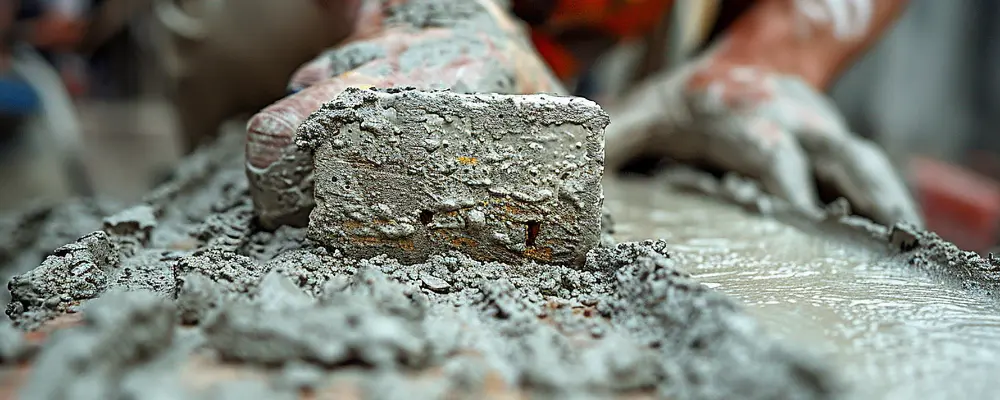Concrete is a basic and widely used construction material and used in almost all the construction procedures for modern infrastructure. It is available in many grades, each with special qualities. Among the various grades of concrete available, the M10 concrete fundamental mix is important for specific applications in construction. This article explores the key aspects, applications, benefits, and technical specifications of M10 concrete.
What is M10 Concrete?
M10 concrete is the lower grade of concrete, defined by a mix ratio of cement, sand and coarse aggregates at a proportion of 1:3:6. This means that for every one part of cement, there are three parts of sand and six parts of the aggregate. M10 concrete has a compressive strength of 10 MPa after 28 days of curing and is and due to its lower strength, it is mainly used for non-structural elements and foundation work.
7 Key Features and Specifications of M10 Concrete
Following are the important characteristics of M10 concrete that you should know before using it.
1. Mix Ratio
The ratio of M10 concrete is 1:3:6, that is, cement: sand: aggregate. This ensures that the concrete is suited for purposes where high strength is not a major requirement. Aggregate gives the concrete mix volume, while cement binds everything together.
2. Workability
M10 concrete displays moderate workability, making it easy to handle and place during construction. The slump value can range from 25 mm to 50 mm, depending on the water content and admixtures used. To improve the workability of concrete for specific applications, water can be added, or superplasticizers can be used.
3. Curing Time
M10 concrete, like most other concrete, needs proper curing to reach its full strength. It takes 28 days for M10 concrete to reach its desired compressive strength of 10 MPa. Proper curing is important to prevent the concrete from cracks and shrinkage.
4. Compressive Strength
M10 concrete has a lower strength spectrum, with a compressive strength of 10 MPa. It is not meant for the use of load-bearing applications but is suitable for filling and non-structural tasks. The full compressive strength is obtained after 28 days of curing.
5. Density
M10 concrete has a density ranging from 2200 to 2400 kg/m3, which makes it similar to most other normal-weight concrete. Concrete’s density depends on the type of aggregates that are used in the mix.
6. Water-Cement Ratio
The water-cement ratio of M10 concrete ranges normally from 0.55 to 0.6. This makes certain that the mix is workable while maintaining the desired strength.
7. Aggregate Size
The maximum aggregate size used in M10 concrete is 20mm. Depending on the type of application, larger aggregates can be used, but normally, smaller sizes are preferred for better handling and finish.
Applications of M10 Concrete
M10 concrete can be used in areas where high load-bearing capacity is not required. Its common applications are given below.
1) Foundation and Footings
M10 concrete is widely used for the base preparation of the footings and foundations, as it provides a stable base for the reinforcement of the higher-grade concrete, acting as a levelling layer.
2) Paving and Road Work
M10 concrete can be used for paving pedestrian pathways, walkways, and road curbs where heavy vehicular loads are not expected.
3) Floor Screeding
It is ideal for floor screeds or levelling floors before the final concrete or finishing layer is applied.
4) Sub-Bases
M10 can be used for projects that need a stable sub-base before laying higher-strength concrete or tiles.
5) Void Filling
This grade of concrete can be used for filling voids and cavities during construction, particularly in non-critical areas where strength is not a concern.
6) Non-Load Bearing Walls
M10 concrete can also be used for non-load-bearing partitions or walls where the structure does not require the support of heavy loads.
7) Temporary Structures
The cost and durability of M10 concrete are low, which makes it suitable for temporary structures and frameworks.
Benefits of M10 Concrete
1) Cost-Effective: One of the primary advantages of M10 concrete is its cost-effectiveness. It uses a lower amount of cement compared to higher grades, is cheaper to produce and is often chosen for non-structural applications.
2) Easy to Use: It is relatively easy to mix and pour because of its moderate workability. This makes it a convenient option for simpler construction projects.
3) Sufficient for Non-Load Bearing Applications: Even though it does not have high compressive strength, it is sufficient for certain tasks like screeding, flooring, and non-load-bearing structures.
4) Quick Setting: M10 concrete sets quickly compared to higher grades, especially when used in dry or warm climates. When working on projects with short deadlines, this can be helpful.
5) Versatility: It is versatile and can be used for a wide range of foundational, levelling, and filling applications.
6) Reduced Shrinkage: The lower cement content reduces the likelihood of shrinkage cracks in M10 concrete, which is beneficial for applications like screeding.
As explained above, M10 concrete is a lower grade of concrete used in non-load-bearing applications where high strength is not necessary. Its mix ratio of 1:3:6 makes it ideal for foundational work, sub-bases, and non-load-bearing structures. It is cost-effective and easy to handle, making it a suitable option for simpler construction tasks.
Consult the professionals and builders at Brick & Bolt, who will guide you about the specific properties that can ensure a solid foundation or stable base for your projects that do not need high structural integrity. A proper understanding of its applications, technical specifications, and curing requirements allows for efficient and effective use in construction.

